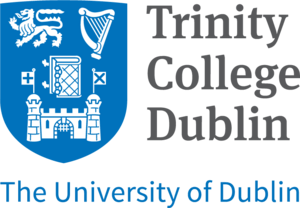
Trinity College Dublin
Green Education Ranking
#127
About Trinity College Dublin
Trinity College (Irish: Coláiste na Tríonóide), officially The College of the Holy and Undivided Trinity of Queen Elizabeth near Dublin is the sole constituent college of the University of Dublin, a research university in Dublin, Ireland. Queen Elizabeth I issued a royal charter for the college in 1592 as "the mother of a university" that was modelled after the collegiate universities of both Oxford and Cambridge, but unlike these affiliated institutions, only one college was ever established; as such, the designations "Trinity College" and "University of Dublin" are usually synonymous for administrative purposes. Trinity is Ireland's oldest university with a reputation as a research-intensive centre. Academically, it is divided into three faculties comprising 23 schools, offering degree and diploma courses at both undergraduate and postgraduate levels. The admission procedure is based exclusively on academic merit, with the college being known for programmes in law, literature and humanities. Trinity College Dublin is one of the seven ancient universities of Great Britain and Ireland, and it is a sister college to both St John's College, Cambridge, and Oriel College, Oxford.By incorporation, a graduate of Dublin, Oxford or Cambridge can be conferred the equivalent degree at either of the other two without further examination. The Library of Trinity College is a legal deposit for Ireland and the United Kingdom, being the largest library in the country and housing the Book of Kells since 1661. The university has educated many of Ireland's most successful poets, playwrights and authors, including Oscar Wilde, Jonathan Swift, Bram Stoker, Sheridan Le Fanu, William Trevor, John Millington Synge, Oliver Goldsmith, Thomas Moore and William Congreve; Nobel Laureates Samuel Beckett, Ernest Walton, Mairead Maguire and William Cecil Campbell; former Presidents of Ireland Douglas Hyde, Éamon de Valera, Mary Robinson, and Mary McAleese; philosophers George Berkeley and Edmund Burke; as well as mathematicians George Salmon, Robert Mallet, Bartholomew Lloyd, George Johnstone Stoney and William Rowan Hamilton. Notable faculty members and lecturers at the university included Humphrey Lloyd, J. B. Bury, Erwin Schrödinger and E. T. Whittaker.
About World Green University Ranking
World
Green University Ranking 2024 is a
scholarly acknowledgment of educational
institutions standing at the forefront of
Education for Sustainable Development (ESD) and
leading the Green Education Transformation
(Education 6.0).
World Green University Ranking classifies
universities based on the six pillars of the
Holistic Green Education Framework, including
leadership governance, curriculum, innovation,
facilities, human capital, and community
partnerships.
The methodology employed in our Green Education Ranking is designed relying on the six pillars of the Holistic Green Education Framework. Each pillar contributes to the institution’s overall score, with a carefully assigned weight reflecting its significance in fostering sustainability. The total weight of the six pillars collectively amounts to 100%, signifying a balanced evaluation across critical dimensions of Green Education. Within each pillar, various standards are carefully assessed, with weights ranging between 1 and 2, emphasizing the varying importance of each criterion. This nuanced approach ensures a holistic evaluation and offers an insightful measure of universities commitment to Green Education Transformation (Education 6.0).
| # | Six Pillars of Green Education Framework (6Gs). | Weight |
|---|---|---|
| 1 | Green Educational Leadership | 14% |
| 2 | Green Curriculum | 17% |
| 3 | Green Innovation and Research | 19% |
| 4 | Green Facilities | 15% |
| 5 | Green Human Capital | 19% |
| 6 | Green Communities | 16% |
| Total | 100% |

